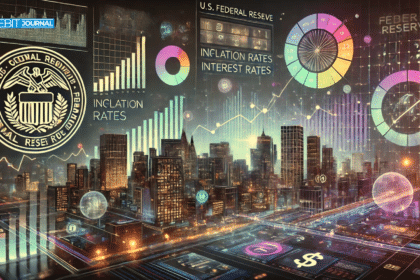Some of the largest banks in the United States—including JPMorgan Chase, Bank of America, Citigroup, and Wells Fargo—are reportedly in early discussions to launch a joint stablecoin initiative. This unprecedented collaboration could mark a turning point in how traditional finance engages with digital assets.
With the stablecoin market nearing a $245 billion valuation and expected to explode to $2.5 trillion by 2030, U.S. banking giants are eyeing a regulated entry point—driven in part by the emerging GENIUS Act, which promises to offer legal clarity for stablecoin issuers.
Traditional Finance Enters the Digital Dollar Arena
The proposed stablecoin project, according to multiple reports, would be developed through Early Warning Services (operator of Zelle) and The Clearing House, both co-owned by these major financial institutions. The goal: create a bank-backed digital currency that meets regulatory standards, provides trust, and integrates seamlessly with the U.S. banking system.
This move comes in response to the dominance of crypto-native stablecoins such as Tether (USDT) and Circle’s USDC, which have long filled the regulatory vacuum banks avoided. But now, the tide is turning.
“Banks aren’t just dipping their toes in anymore,” said fintech strategist Lisa Timmons. “They’re preparing to anchor the stablecoin market with legitimacy and scale.”

Why Now? The GENIUS Act Changes the Game
The Guiding and Establishing National Innovation for U.S. Stablecoins (GENIUS) Act, a new bipartisan proposal in Congress, is fueling this shift. The bill would create a national framework for stablecoins, setting reserve requirements, enforcing transparency, and requiring consumer protections.
If passed, the GENIUS Act could greenlight banks to issue stablecoins backed by U.S. dollars or Treasury instruments, eliminating the regulatory grey zone that has haunted previous attempts. Analysts believe this could fast-track adoption and unlock trillions in value.
“With the GENIUS Act, we’re seeing regulatory railways being built in real time,” said blockchain policy expert Miguel Alvarez. “This is the signal Wall Street’s been waiting for.”
What the Joint Bank Stablecoin Could Look Like
While still in early discussions, the proposed stablecoin would likely be:
Fully USD-backed, with 1:1 reserves held at regulated institutions
Instantly redeemable, similar to bank deposits
Integrated into the existing banking infrastructure
Compliant with U.S. financial laws and the GENIUS Act
Unlike algorithmic or offshore stablecoins, a bank-issued token would have the full backing of U.S. financial institutions, bridging the gap between crypto efficiency and traditional trust.
The banks plan to leverage their massive user bases through apps like Zelle to make stablecoin usage as easy as sending a text message.

Strategic Advantages Over Crypto-Native Coins
By entering the stablecoin space, banks stand to gain several key advantages:
Preserve Market Share: Prevent customer migration to crypto-native platforms
Expand Cross-Border Payments: Offer fast, low-cost transfers globally
Compete with Big Tech: Counter stablecoin plans from PayPal, Meta, and fintech startups
Drive New Revenue Models: Stablecoins could power new lending, trading, and yield products under banking compliance
Moreover, a bank-backed stablecoin would likely face less scrutiny from regulators, potentially fast-tracking its path to widespread acceptance.
Market Impact and Industry Reactions
The crypto industry’s reaction to the news has been mixed. Some hail it as a sign of institutional validation, while others warn that it could centralize power and challenge the open, permissionless ethos of crypto.
Circle CEO Jeremy Allaire cautiously welcomed the competition: “It’s a positive step forward—as long as innovation remains open and interoperable.”
Conversely, crypto advocates want decentralized alternatives to remain protected under the same legislative frameworks.
Despite these concerns, the market is already reacting. On-chain data shows a slight outflow from USDC and USDT, as traders speculate on a shift toward regulated options.
What Comes Next?
With the GENIUS Act moving through Congress and banking giants finalizing their approach, a formal announcement could come as early as Q3 2025. If successful, the launch could signal the most significant institutional stablecoin deployment to date, challenging not just crypto-native issuers but also global CBDC efforts.
“This is the start of a stablecoin war,” said analyst Ari Grant. “And it won’t be fought on crypto Twitter. It’ll be decided in boardrooms, Congress, and your banking app.”
FAQs
What is a stablecoin?
A stablecoin is a digital asset that maintains a stable value by being pegged to a fiat currency like the U.S. dollar, often backed by real reserves.
Why are banks launching their own stablecoin?
To modernize payments, stay competitive, and offer customers a secure digital alternative that operates within the current financial system.
What is the GENIUS Act?
A proposed U.S. bill would regulate stablecoins, ensuring they are properly backed, transparent, and safe for consumer use.
Glossary
Stablecoin: A cryptocurrency pegged to a stable asset like the U.S. dollar to reduce volatility.
GENIUS Act: U.S. legislation proposed to regulate the issuance and operation of stablecoins.
Early Warning Services: A consortium of U.S. banks best known for operating the Zelle payment network.
The Clearing House: A payment infrastructure owned by major U.S. banks, enabling large-value and real-time payments.





























